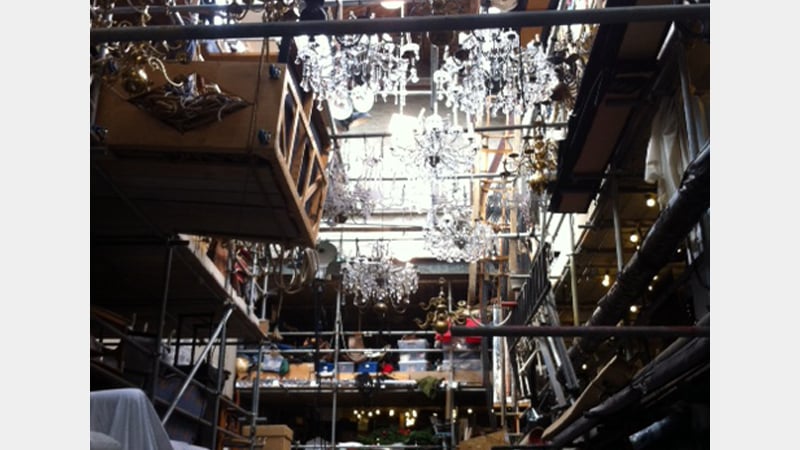In the middle of the autumn term, a few Visual Arts students and staff made a visit to the costume and prop store of Chichester Festival Theatre. Housed in the former 'Olympia Electric', the town's first purpose-built cinema dating from 1911, the store contains a vast collection of theatrical costumes and set objects, all organised according to type. The building and its contents are certainly something of a hidden gem, given the location in the middle of a city roundabout, a small distance from the theatre complex itself. After being destroyed by fire in 1922, the building became the Southdown bus garage before its more recent transformation into the theatres storage warehouse.
. Of course, the old cinema's rendered facade, complete with its elaborate frieze in the gable, has been stripped back. The only remaining decorations are the porthole windows and an overlaid, elongated figure created by Italian street artist Giacomo Bufarini (aka RUN) as part of the Chichester Street Art Festival in 2013. Yet the elegant history of the cinema remains visible in the red brick quoins and flint panels down the sides of the building, curiously reminiscent of some areas of West Dean House.
During a brief tour by Props Store Co-ordinator, Katie Hennessy, it was explained that although a great deal of material was still on location - including a series of elaborate costumes from a recent production of Amadeus - a large number of more delicate and elaborate costumes were stored elsewhere in the area, in an environment that could be controlled more easily. Some of the designs and fabrics used were of particular interest to students engaged with tapestry weaving, the aesthetics of costume and historical examples of baroque, even near-absurdist, costume.
It was certainly the case that the fabric of the building was showing its age. Stretches of ivy had begun to infiltrate the eaves and evidence of damp was visible on many of the walls. The drama of the space, however, was undeniable. Moving through a series of temporary floors constructed from scaffolding, we moved through racks of period clothing, admiring the reconstructed textures and multi-layered textiles, a great deal of craftsman ship involved in 'authentically' replicating artefacts for the theatre audience: one that only needs to be 'fooled' in the context of their distance from the stage. The centre of the space was filled with chandeliers, whereas a mish-mash of period furniture occupied the main floor area.
The rear of the building was divided into a series of areas dedicated to specific object-types, with various containers bearing evocative labels: 'Misc. animal-related'; ''Taxidermy & Dead Things', alongside innumerable examples of household objects, mannequin parts, pianos and even a couple of coffins.
Thanks to Katie and Chichester Festival Theatre we had a most diverting time wandering through this archive of quixotic and exotic materials. Not only could we relate the experience to innumerable thoughts about modes of display, choreography of space (and so on) in relation to a whole variety of artistic practices, but we could also simply enjoy the opportunity of going inside a building seen from outside countless times, having never had a glimpse of the treasures lined up to order inside.








